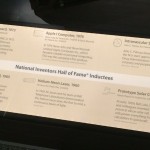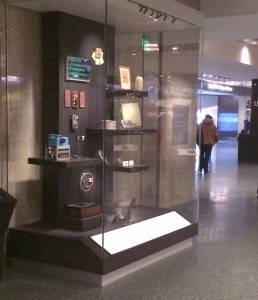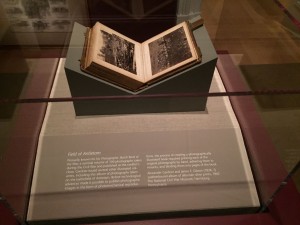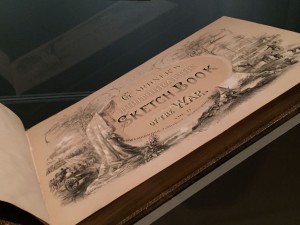Kudos Affiliates! May 2021
Congratulations to these Affiliates on their recent accomplishments! Do you have kudos to share? Please send potential entries to Aaron Glavas,
FUNDING
The Minnesota Historical Society announced the newest recipients of 30 Minnesota Historical and Cultural Heritage Small Grants including The Bakken Museum (Minneapolis, MN). The Museum received $9,994 to process the Earl Bakken Legacy Collection, allowing for greater public access to these resources. The Bakken Museum will also be a core research partner as part of a $1.5 million grant awarded to Binghamton University faculty. The grant will help improve makerspace learning for youth.
Frank Leta Honda has donated two new 2020 Honda Odyssey minivans to the Saint Louis Science Center (Saint Louis, MO) to transport Youth Exploring Science (YES) Program teens and Science Center educators to events during the summer as COVID-19 safety protocols allow. The YES Program was founded to help teens, particularly those from underserved communities, to recognize their potential in science, technology, engineering, art, and mathematics (STEAM) career fields.
Framingham State University (Framingham, MA) has been awarded a $62,250 grant from the Massachusetts Higher Education Innovation Fund (HEIF) to coordinate a multi-day Racial Equity Policy Review Institute. Designed for up to 150 leaders within the campus community, participants will gain a better understanding of systemic racism in higher education and how it manifests on campus, be able to define what a racist policy is and how it shows up in student outcomes, and create an initial yearlong plan to undertake policy review.
History Colorado (Denver, CO), Hagley Museum (Wilmington, DE) and USS Constitution Museum (Boston, MA) were among several Affiliates awarded humanity grants from The National Endowment for the Humanities (NEH). Grant awards support the preservation of historic collections, humanities exhibitions and documentaries, scholarly research, and curriculum projects.
- History Colorado was awarded a Media Projects Production grant for $310,536 to support the production of the Lost Highways Podcast series, an eight-episode offering focused on Colorado and Western history. History Colorado also received an Exhibitions-Implementation grant for $400,000 for The Sand Creek Massacre Exhibition. The permanent exhibition details the 1864 Sand Creek Massacre of Cheyenne and Arapaho tribal members.
- Hagley Museum and Library ($194,400) and Center for Jewish History (New York, NY) ($153,292), each received a Fellowship Programs grant. The grants will support 12 months of stipend support for 1–3 fellowships per year for two to three years.
- USS Constitution Museum will receive a Dialogues on the Experience of War grant for $96,264 to develop Sailors Speak: The Impact of War on Naval Veterans, their Families, and the Country. The award will be used for the training of facilitators to lead three discussion series for naval veterans and their families, based on historical documents and material culture from the War of 1812 and the post-9/11 wars.
- City Lore (New York, NY) was awarded an Exhibitions-Planning grant for $75,000 to create a traveling exhibit about the 1970s Federal Comprehensive Employment and Training Act (CETA), that provided work for artists.
- American Jewish Historical Society (New York City, NY), part of the Center for Jewish History, received $131,681 for a Humanities Collections and Reference Resources grant for The People’s Relief Committee Project to preserve and digitize materials that document the work of the People’s Relief Committee for Jewish War Sufferers (1915–1924), an American Jewish organization that sought to help Jewish communities and individuals in Europe during and after World War I.
The Rhode Island Historical Society (Providence, RI) received a donation of $50,000 from Walmart to pay for the creation of a curriculum to teach Black history and heritage in the local schools. The curriculum will include lesson plans, teacher training, and virtual learning tools.
AWARDS & RECOGNITION
The Rockwell Museum (Corning, NY) announced Janelle Steiner, events coordinator, and Kate Swanson, interpretation and public engagement educator, have been selected to participate in The Museum Association of New York’s (MANY) “Building Capacity, Creating Sustainability, Growing Accessibility” program. The IMLS Cares Act grant project is designed to help museums impacted by the COVID-19 pandemic share their collections and reach audiences who cannot physically visit their museums. In this two-year program, museums will identify an event or project to deliver virtually to their audiences, focusing on developing programs from stories found in their collections that reveal cultural and racial diversity in their communities.
LEADERSHIP
Stephanie Haught Wade was named the new director of Historic Arkansas Museum (Little Rock, AR). Wade has been a historian with the Department of Arkansas Heritage since 2017, where she managed the Arkansas Historical Marker Program and was a member and administrator of the Women’s Suffrage Centennial Commemoration Committee. She began work on April 5.







